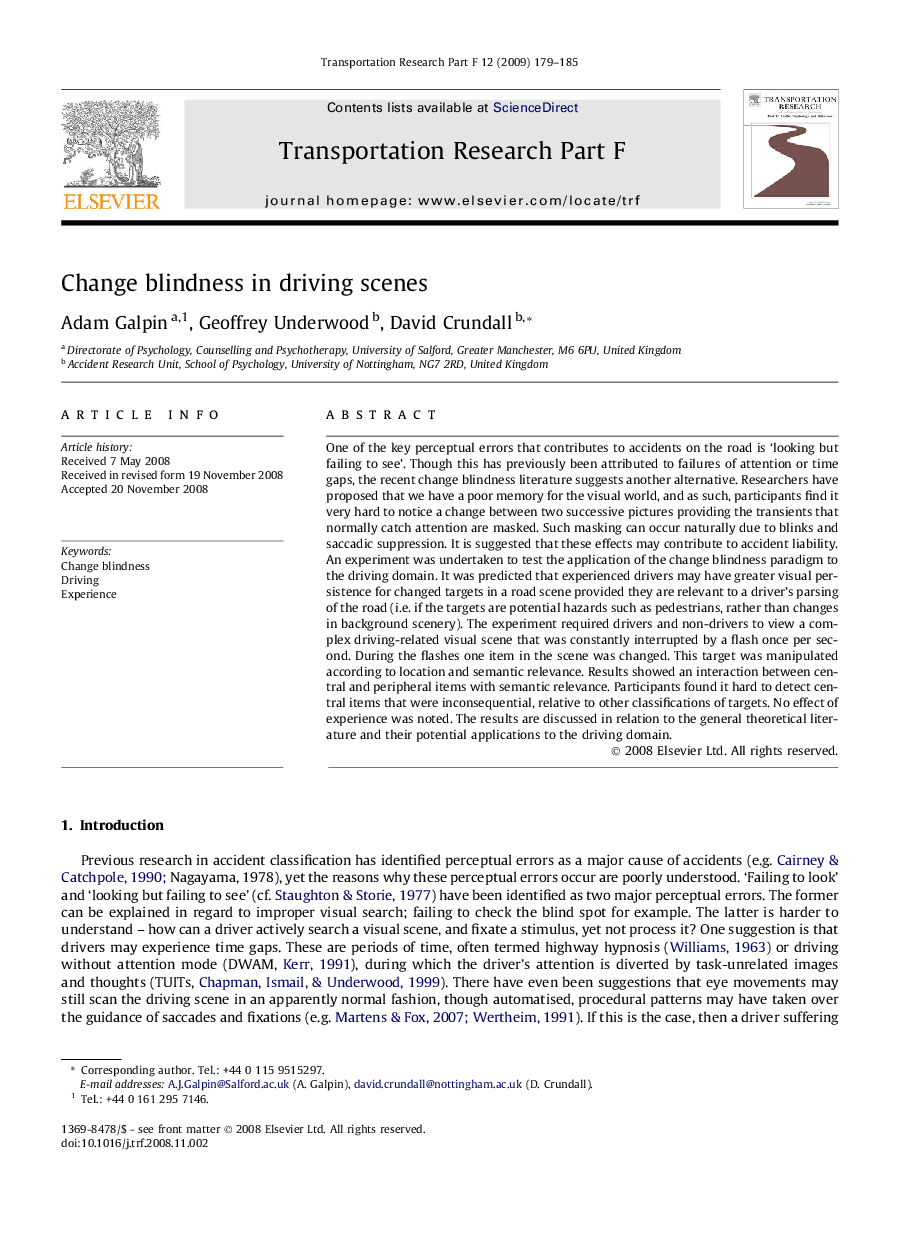| کد مقاله | کد نشریه | سال انتشار | مقاله انگلیسی | نسخه تمام متن |
|---|---|---|---|---|
| 898102 | 915231 | 2009 | 7 صفحه PDF | دانلود رایگان |

One of the key perceptual errors that contributes to accidents on the road is ‘looking but failing to see’. Though this has previously been attributed to failures of attention or time gaps, the recent change blindness literature suggests another alternative. Researchers have proposed that we have a poor memory for the visual world, and as such, participants find it very hard to notice a change between two successive pictures providing the transients that normally catch attention are masked. Such masking can occur naturally due to blinks and saccadic suppression. It is suggested that these effects may contribute to accident liability. An experiment was undertaken to test the application of the change blindness paradigm to the driving domain. It was predicted that experienced drivers may have greater visual persistence for changed targets in a road scene provided they are relevant to a driver’s parsing of the road (i.e. if the targets are potential hazards such as pedestrians, rather than changes in background scenery). The experiment required drivers and non-drivers to view a complex driving-related visual scene that was constantly interrupted by a flash once per second. During the flashes one item in the scene was changed. This target was manipulated according to location and semantic relevance. Results showed an interaction between central and peripheral items with semantic relevance. Participants found it hard to detect central items that were inconsequential, relative to other classifications of targets. No effect of experience was noted. The results are discussed in relation to the general theoretical literature and their potential applications to the driving domain.
Journal: Transportation Research Part F: Traffic Psychology and Behaviour - Volume 12, Issue 2, March 2009, Pages 179–185